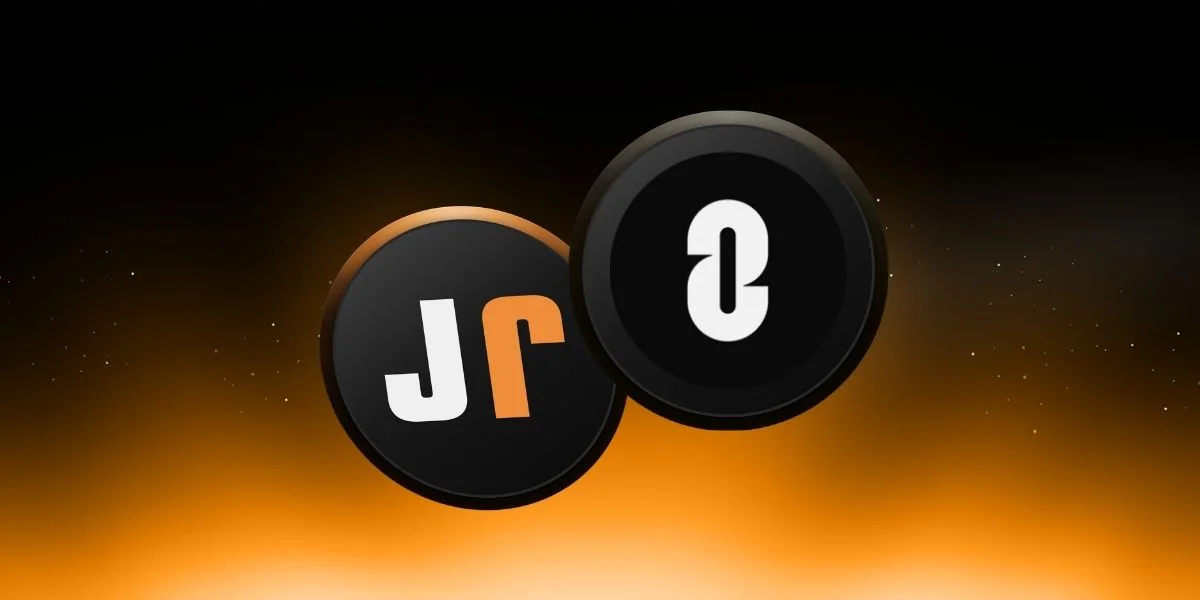News
Altcoin News
Altcoin News
Browse all Altcoin related articles and news. The latest news, analysis, and insights on Altcoin.
APT Comment and Price Analysis 23 July 2025
APT Technical AnalysisThe descending channel pattern is obvious on the APT chart. After volatile movements within the channel, the price of the coin has now reached both the upper border of the channel and the horizontal resistance zone, which stands around $5.60 in the short term.According to the technical outlook of the channel, it can be said that in case of an upward breakout, the price can rise as long as the channel’s length; thus, the coin can target the level of $8.40.The resistance at $5.60 and the horizontal resistance both must be broken above in order to trigger this upward momentum. Unless this resistance level gets broken, each horizontal candle will increase sell pressure and the price might drop to the lower support zones. Falling Channel Formation Short-term support levels:$5.10$4.93$4.44The price is likely to hold above these levels after a possible pullback and then bounce.Possible targets above are as follows:$6.18$6.39$7.10Main target: $8.40 (target of the channel’s breakout)These price levels overlap both with areas acting as resistance in the past and with technical formation targets.These analyses, not offering any kind of investment advice, focus on support and resistance levels considered to offer trading opportunities in the short and medium term according to the market conditions. However, traders are responsible for their own actions and risk management. Moreover, it is highly recommended to use stop loss (SL) during trades.
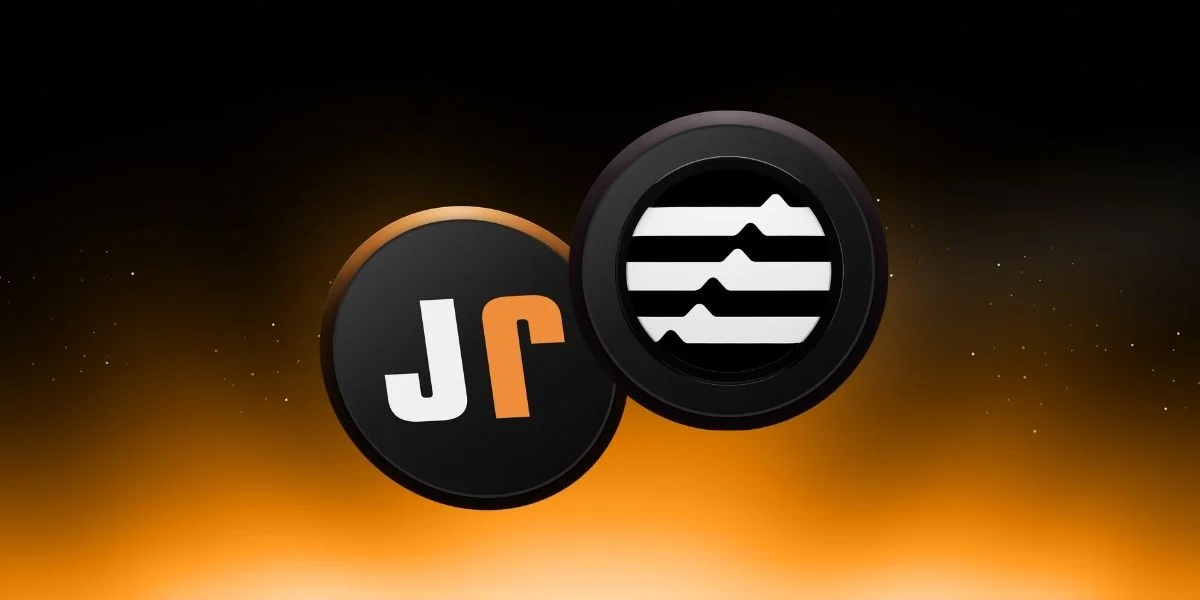
NIL Comment and Price Analysis July 22, 2025
NIL Technical AnalysisLooking at the NIL chart on a daily timeframe, it can be seen that the price has stuck within a triangle formation and there stand key support and resistance levels where the price might get a reaction. Triangle Formation The first support to follow is $0.3352 in case of a pullback. This price level coincides with the lower border of the triangle pattern and it is crucial for the formation to continue. If this price level gets broken downwards, we can see a drop to the strong buy level of $0.3100, where the price recovered many times before.In a positive scenario, the first resistance level the price will test is around $0.3840, which stands for the upper border of the triangle formation; therefore, it should be regarded as a key level for a potential breakout. If the price can see daily closing above the level of $0.3840, this can be considered as a confirmation of the upward breakout. We could see a test to the level of $0.4120 if the price can exceed $0.3840. If the momentum continues, the price range of $0.48–$0.50 could be targeted, as this area is both a psychological threshold and a place where sharp sell pressure was seen in the past.These analyses, not offering any kind of investment advice, focus on support and resistance levels considered to offer trading opportunities in the short and medium term according to the market conditions. However, traders are responsible for their own actions and risk management. Moreover, it is highly recommended to use stop loss (SL) during trades.
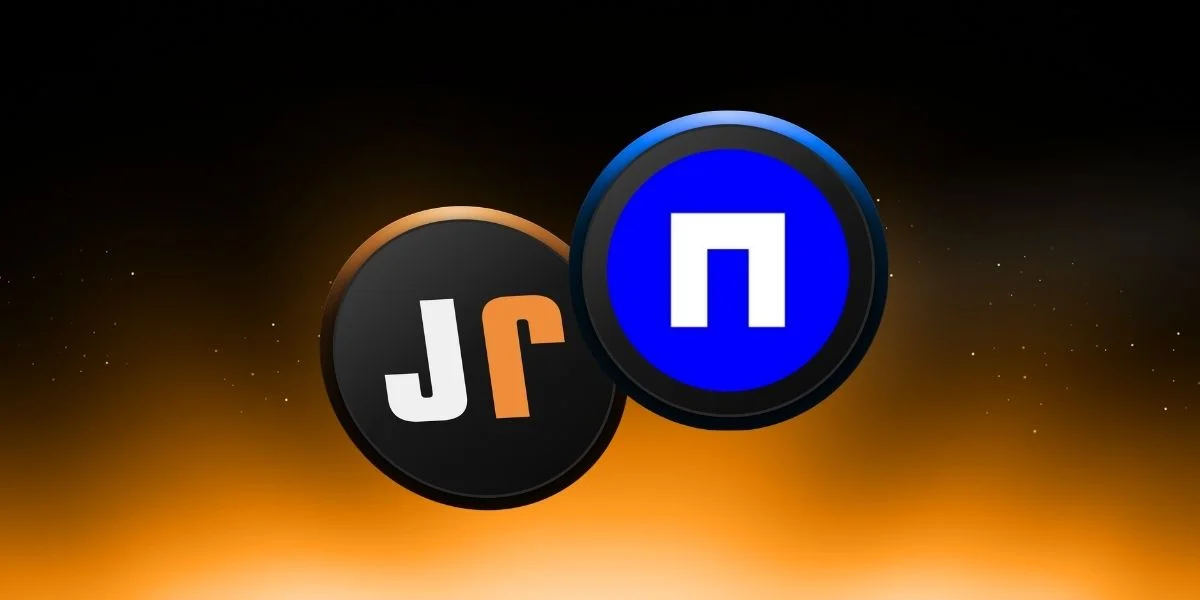
XTZ Comment and Price Analysis July 22, 2025
XTZ Technical AnalysisThe Tezos (XTZ) community recently approved a new network upgrade with a huge participation rate of 70%. The aim of this upgrade is to increase the speed and scalability of smart contracts; this upgrade is also considered a major step towards institutional adoption. With the support of this huge news, the price of XTZ jumped swiftly and broke above the psychological level of $1, below which the coin had been trading for a very long period of time. Let’s analyze the potential scenarios technically. Falling Wedge Formation Looking at the Tezos (XTZ) chart on a weekly timeframe, we see that the price of the coin has surged to the upper border of the falling wedge it has been trading within for long and has seen a rejection from there. This indicates that a strong sell pressure occurred at this key level where both technical resistance and MA200 are located.The price is under the great pressure of both the falling wedge and the resistance. While the $1.00 level stands as a key long-term resistance, the levels of $0.79 and $0.70 could be retested.The coin is still trading within the falling wedge formation. This falling wedge pattern and the rejection from MA200 suggest that the rise of the price could be short-lived. However, if we see a break above the level of $1.10 with great momentum, then we can state that a trend reversal is possible.These analyses, not offering any kind of investment advice, focus on support and resistance levels considered to offer trading opportunities in the short and medium term according to the market conditions. However, traders are responsible for their own actions and risk management. Moreover, it is highly recommended to use stop loss (SL) during trades.
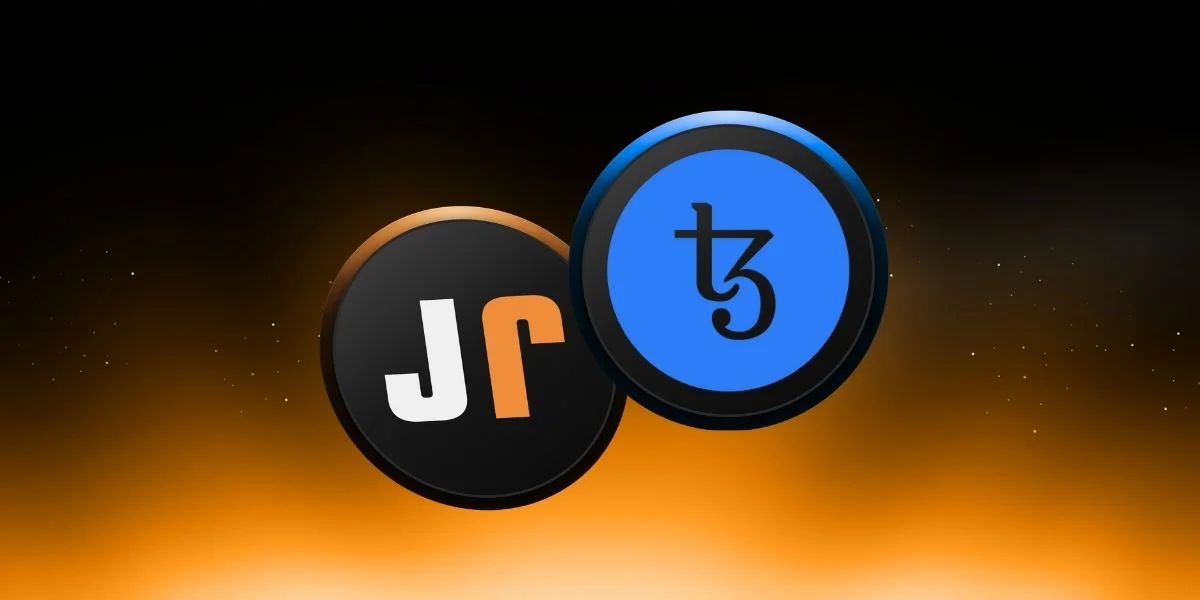
OP Comment and Price Analysis July 22, 2025
OP Technical AnalysisLooking at the Optimism chart on a daily timeframe, it is clearly seen that the short-term falling wedge formation has been broken upwards, suggesting that the price could gradually go up towards the target of this wedge formation. Though the technical target of this formation seems to be the level of $2.70, we must add that there are some strong resistance zones the price must break before reaching the target just mentioned.OP is currently trading around the zone of $0.84–$0.91, which stands as a key resistance area in the short term. If the price can break this resistance level with great momentum, the next resistance levels to follow are $1.12, $1.39, and $1.50 respectively.Intersecting not only the horizontal resistance but also the long-term falling trendline, the range between $1.40–$1.50 is technically extremely critical. Unless this critical zone gets broken, this rise could remain limited. On the other hand, if it is broken above, then the price could test $1.89 and $2.77 levels in the mid term. Summary:Falling wedge formation has been broken above in the short term.The target of this breakout is technically around $2.70Current resistance level: $0.84–$0.91The next resistance levels: $1.12 → $1.39–$1.50Closing above $1.50 suggests that both horizontal and long-term downtrend have been broken upwards.Mid-term potential targets: $1.89 → $2.77In case of a pullback: $0.66 is the first support to follow.These analyses, not offering any kind of investment advice, focus on support and resistance levels considered to offer trading opportunities in the short and medium term according to the market conditions. However, traders are responsible for their own actions and risk management. Moreover, it is highly recommended to use stop loss (SL) during trades.
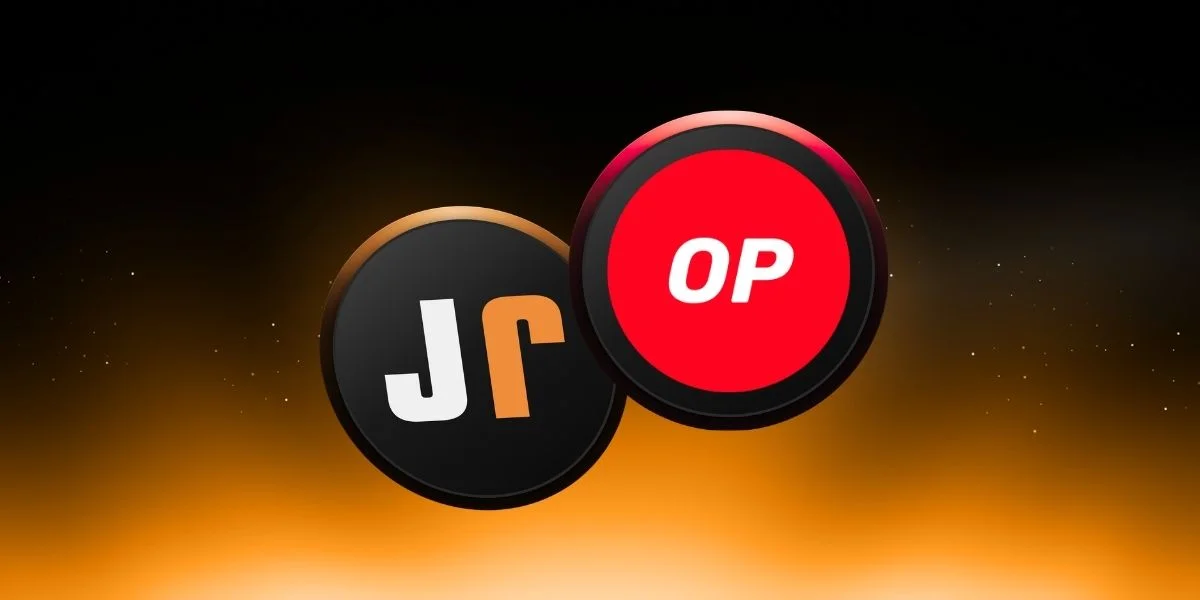
STRK Comment and Price Analysis 22 July 2025
STRK/USDT Technical AnalysisSTRK has finally broken above the falling wedge formation it has been trading in for a long period. The price of the coin has now reached the first resistance zone of $0.153 - $0.162 which worked as a strong resistance and support area in the past.In case the price continues to rise after the breakout, it can be expected to test upper resistance levels gradually. The levels of $0.190 and $0.222 are key resistance levels to follow in the short and mid term.In order for the upward momentum to continue, it is important that the price of the coin hold above the level of $0.153, below which we should be following the support levels of $0.128 and $0.101. Fracture of the Falling Wedge Formation Summary:Falling wedge formation has been broken upward.The price meets resistance level of $0.153 – $0.162.If this resistance gets broken, the targets to folow are $ 0.190→ $0.222 → $0.235 → $0.280.Support levels in case of a pullback are $0.128 → $0.101.If the breakout gets confirmed , the target of the formation in the mid term is $0,28 These analyses, not offering any kind of investment advice, focus on support and resistance levels considered to offer trading opportunities in the short and medium term according to the market conditions. However,traders are responsible for their own actions and risk management. Morover, it is highly recommended to use stop loss (SL) during trades.

What is Dai (DAI)?
The question of what DAI is is one of the most frequently asked questions by users seeking stable and reliable alternatives in the cryptocurrency world. DAI coin is a decentralized stable cryptocurrency with a collateralized stablecoin model running on the Ethereum network. Designed to remain fixed at $1, DAI operates without any central authority.It's also crucial to understand that DAI was developed by MakerDAO, the first DAO—or decentralized autonomous organization—in the cryptocurrency ecosystem. As you'll see, decentralized, user-based governance plays a critical role in DAI.In this guide, we'll explore questions like "What is DAI coin?", "How does DAI work?", and "Why does DAI's price remain stable?" We'll also explore technical concepts such as the DAI coin collateral system, what is MakerDAO, and the RWA collateral model. Ready? Let's get started!Definition and Origins of DAIDAI was first created by MakerDAO in 2017. MakerDAO is a decentralized autonomous organization (DAO) built on Ethereum and is the protocol behind DAI. So, if you're wondering what MakerDAO is, in short: MakerDAO is a system that allows users to generate DAI in exchange for collateral through smart contracts and manages DAI's stability. MakerDAO is a decentralized and autonomous protocol that uses collateralized debt positions (CDPs) to ensure the stability of the DAI stablecoin. Through its DAO structure, community members provide governance by voting on system parameters and protocol changes with MKR tokens. How MakerDAO works. Every MKR holder can influence community decisions. Started by Danish entrepreneur Rune Christensen, this protocol eliminated traditional financial intermediaries, allowing users to self-create a stablecoin.When we look at how DAI technically works, we encounter the collateralized stablecoin model. Essentially, the DAI collateral system is based on users locking their cryptocurrency assets into a smart contract and generating DAI in return. In other words, DAI is created by providing assets of another value as collateral. Users can borrow DAI in return by locking crypto assets (e.g., Ether or other tokens) accepted into MakerDAO's smart contracts on the Ethereum network.This process can be roughly described as "minting DAI," but it's not a central authority that issues DAI, but rather the users themselves. So, if you're wondering who issues DAI, the answer is simple: There's no company or bank directly issuing DAI. Users create the coin through the protocol. For example, it's possible to generate stablecoins in exchange for ETH as collateral in the system: A user locks a certain amount of Ether in a vault and generates DAI corresponding to a certain percentage of it through the smart contract. The user can spend the DAI they obtain as they wish or use it in different DeFi protocols; when they want to reclaim their collateral, they can unfreeze the locked assets by paying back the DAI they generated (along with the interest accrued throughout the transaction).DAI's collateral system is based on the principle of over-collateralization for security purposes. This means that collateral worth more than the amount of DAI produced is held in the system. For example, a user who wants to generate 100 DAI must generally lock up at least $150 worth of Ether as collateral. This ratio is called the collateralization ratio and is determined differently by MakerDAO governance for each collateral type (for example, the ratio can be 110% for some more stable assets, while it can be 150% or more for more volatile assets). Thanks to overcollateralization, even if the value of DAI declines, the collateral in the system remains sufficient to more than cover that value.How does DAI work?DAI maintains its $1 value through the automated operations of smart contracts and market dynamics. For example, if the market price of DAI falls below $1, users will buy cheap DAI to pay off their debts, reducing the amount of DAI in circulation and pushing the price back closer to $1. Conversely, if DAI rises above $1, arbitrageurs can profit by depositing collateral, producing 1 DAI at a cost of $1, and selling it on the market at a slightly higher price. This increases supply and lowers the price. Furthermore, MakerDAO influences DAI demand by adjusting fee rates (the so-called "stability fee," similar to the borrowing interest rate) and savings rate (DAI Savings Rate (DSR) to maintain DAI's stability. For example, if DAI demand is low, DSR is increased to provide interest incentives to DAI holders. If demand is high, borrowing fees are increased to slightly curb DAI production. These are all part of DAI's price stability mechanism. DAI token creation process. Source: MyEtherWallet In summary, DAI emerged as a decentralized stablecoin and utilized innovative components such as smart contracts, crypto collateral, and community management to achieve this goal. Since its launch in 2017, the system has been continuously updated and improved. The first version of DAI was known as Single Collateral DAI (SAI) and supported only ETH collateral. However, a significant update in 2019 led to the transition to Multi-Collateral DAI (MCD). This allowed multiple crypto assets to be used as collateral to generate DAI, replacing the old SAI system with MCD.DAI's History: Major MilestonesFrom humble beginnings in 2017, DAI quickly became the backbone of Ethereum-based financial applications. Each update, each newly integrated collateral type, and each governance decision enabled DAI to evolve into a technical ecosystem. Let's take a look at the key milestones of this impressive journey:2017: The first version of DAI, Single Collateral DAI (SAI), was launched on the Ethereum mainnet. During this period, DAI was issued solely with Ether collateral. The Maker team, led by Rune Christensen, brought the concept of a decentralized stablecoin to life for the first time with this launch.2019: The transition to Multi-Collateral DAI (MCD) was completed, and the system underwent a major update. With MCD, which went live in November 2019, various cryptocurrencies (such as BAT, USDC, and WBTC) began being accepted as collateral. This update also introduced the DAI Savings Rate (DSR), which allows DAI holders to earn interest. The old single-collateral DAI, called SAI, was discontinued, and all users transitioned to the new DAI system. The differences between DAI and SAI can be illustrated as follows:FeatureSAI (Old DAI)DAI (Current Multi-Collateral)DefinitionSingle-collateral legacy version of DAIDecentralized stablecoin with multi-collateral backingCollateral TypeOnly Ether (ETH)ETH, wBTC, LINK, UNI, stETH, and other crypto assetsBlockchainEthereumEthereumGovernanceInitially launched by MakerDAOGoverned by the community via MKR token votingStatusDeprecated; exists for legacy users onlyActively used and developedStability MechanismCDP (Collateralized Debt Position)CDP + Risk parameters + on-chain governance2020: With the rise of DeFi (Decentralized Finance) applications, demand for DAI exploded. Many users began using DAI on lending/borrowing platforms, making it the preferred choice for liquidity pools. The supply of DAI increased rapidly, particularly during the summer of 2020, known as "DeFi Summer." During this period, incentive programs offered by platforms like Compound made it attractive for users to borrow and use DAI. Consequently, DAI has become a cornerstone of the DeFi ecosystem. DAO supply jumped in 2020. Source: Dune Analytics 2021: DAI's market capitalization continued its steady growth, surpassing the $5 billion mark. This was a significant milestone for DAI and signaled the widespread adoption of a decentralized stablecoin. That same year, the MakerDAO community made significant strides toward fully decentralizing protocol governance. The Maker Foundation officially began transferring its authority to the DAO, effectively transferring control over DAI to a decentralized community rather than a single corporation.2023–2024: The DAI ecosystem began supporting its collateral structure with Real World Assets (RWA) in addition to crypto assets. MakerDAO diversified some of its stablecoin reserves with traditional financial assets. For example, real-world assets such as certain bonds, commercial loans, or tokenized real estate began being accepted as collateral through smart contracts. This innovation further diversified DAI's collateral model and enabled it to leverage assets beyond the crypto market. MakerDAO, for example, aimed to increase protocol revenues by investing a portion of its DAI treasury in US Treasury bonds and collateralized loan agreements. This RWA initiative was considered a significant step toward bridging the gap between DeFi and traditional finance. As the RWA collateral model became more widespread in 2023-2024, confidence in DAI's stability and long-term sustainability also increased. Meanwhile, MakerDAO took significant steps within its Endgame plan that shaped the future evolution of DAI. In this context, NewStable (now the "Sky" protocol) was launched, and transitions from DAI to Sky began gradually. Alternatively, "PureDAI" was offered for those seeking an ideologically pure protocol.2025: In the latest developments, on July 17–18, 2025, the US Congress passed the GENIUS Act, which addresses stablecoin regulation. This law introduces criteria for stablecoins, including high reserve transparency, 1:1 collateral, monthly reporting, independent auditing, and AML compliance. This suggests that global stablecoins like DAI will be more clearly framed under the US regulatory framework. However, due to DAI's inherent crypto-collateralization and decentralization, it may not be as directly affected as state-backed reserve stablecoins (like USDC and USDT). However, MakerDAO may need to increase its gloss to comply with the new process.Why Is DAI Valuable?In the cryptocurrency world, the concept of "value" isn't measured solely by price. Especially when it comes to stablecoins, factors such as the technology behind an asset, its security mechanisms, its use cases, and community support determine its true value. This is where DAI stands out among hundreds of stablecoins. Beyond simply being a coin pegged to $1, DAI represents a financial vision based on decentralization, transparency, and user control.In today's rapidly changing economic environment, DAI offers a powerful alternative for individuals and institutions seeking an uncensored and accessible financial instrument. Whether it's protecting your savings, participating in DeFi protocols, or protecting against volatility, DAI is a valuable tool. While there are many stablecoins on the market, the key elements that make DAI so unique and valuable are:Decentralized and censorship-resistantDAI was designed as a completely decentralized stablecoin, meaning neither a bank nor a private company can control its transactions. Thanks to this structure, operated by smart contracts and a distributed network, no authority can seize or freeze the DAI in your account. This censorship resistance provides a significant advantage, especially for individuals living in authoritarian regimes or those with limited financial access. DAI is not just a cryptocurrency; it is also a powerful symbol of digital financial freedom.Price StabilityIs DAI stable? Yes, DAI's primary goal is to always maintain its value at $1. Its value is protected by smart contracts and collateral structures that ensure the balance between supply and demand. This price stability makes it a reliable bridge, especially among DeFi coins. If you seek a stable value in volatile market conditions, DAI can be both a safe haven and a powerful tool for your financial transactions. DAI is particularly popular in DeFi protocols for transactions such as borrowing and lending, yield farming, or savings.Transparent Collateral StructureDAI has no hidden reserves or assets held behind closed doors. All collateral is clearly visible on the Ethereum blockchain. Each DAI is backed by overcollateralized assets on the blockchain, making it highly reliable within the collateralized stablecoin model. Anyone can examine the system's reserves and collateral ratios in real time. This transparency grounds DAI on a solid foundation not only from a technological perspective but also from a moral perspective. DAI collateral process. Created by UsersThere is no company or central institution that issues DAI; you generate it. When you deposit the appropriate collateral (e.g., ETH, USDC, RWA-backed tokens) into the MakerDAO system, the system returns DAI in return. This model transforms users from passive observers of the financial system into active producers. This feature is particularly revolutionary for individuals who lack access to traditional banking services. Creating your own stablecoin, locking collateral in a Maker vault, and receiving DAI in return provides liquidity and opens the door to participating in a decentralized economy.Community-Based GovernanceDAI's fate is not in the hands of a few individuals or companies. The MakerDAO community decides how the system operates. MKR token holders, through their voting rights, have a say in many matters, from collateral ratios and interest adjustments to the support of new assets and system updates. This allows the protocol to develop within a democratic framework called Maker governance. Everyone who uses DAI is also part of the ecosystem that governs it. This participatory model makes DAI more than just a digital asset; it also becomes a community initiative.For the reasons mentioned above, DAI is valuable not only from a technical perspective but also from a philosophical perspective. As a living answer to the question "What is a decentralized stablecoin?", DAI has become an important tool for those seeking financial freedom and transparency. In the DeFi world, DAI has been integrated into many projects as a successful representative of the collateralized stablecoin model. For example, DAI has become one of the most borrowed/lent assets on many lending platforms (Aave, Compound, etc.). Furthermore, DAI liquidity pools are popular on decentralized exchanges, and DAI is frequently preferred in yield optimization protocols. All these integrations place DAI in a critical position among DeFi coins. In this way, DAI finds itself among the largest stablecoins in terms of market value as of today.Who is the Founder of DAI?The MakerDAO protocol, which gave rise to DAI, was initiated by Rune Christensen. Christensen is a Danish entrepreneur who conceptualized the Maker project in 2014. The idea of MakerDAO and DAI stemmed from Rune Christensen's vision of creating a decentralized stablecoin.In the project's early years, the Maker Foundation, founded under Rune Christensen's leadership, served as the foundation supporting the protocol's development and adoption. The Foundation facilitated DAI's successful growth by laying the groundwork for software development, marketing, and legal matters. However, Christensen had planned from the outset that this foundation would be temporary. Indeed, in 2021, the Maker Foundation dissolved itself, transferring all authority and responsibilities to the MakerDAO community. This step symbolized the transition to fully decentralized governance of DAI and the Maker protocol.Today, there is no single person or company that can be considered the "owner" of DAI. The MakerDAO community is the driving force behind the development and maintenance of DAI. Various working groups and volunteer contributors within MakerDAO ensure the protocol's continuity. Governance decisions are made by the votes of MKR token holders, and each participant, including Rune Christensen, influences the DAI coin solely based on their voting power. In short, when asked who owns the DAI coin, the most accurate answer is that DAI is a collective project, controlled by a distributed community. Rune Christensen is historically known as the founder of MakerDAO and the originator of DAI.Frequently Asked Questions (FAQ)Here are some short answers to some of the most frequently asked questions about DAI:How does DAI remain stable?: DAI is a stablecoin whose value is intended to remain at $1. To maintain this stability, DAI is backed by a collateral mechanism managed by smart contracts. Each DAI is backed by excess collateral, and the MakerDAO protocol keeps the price of DAI around $1 thanks to tools like interest rates and arbitrage opportunities.Who owns the DAI coin?: DAI has no specific company or individual owner. DAI is managed by the decentralized community called MakerDAO and generated by users. While Rune Christensen and the Maker Foundation pioneered its initial creation, today DAI remains entirely decentralized and controlled by the MakerDAO community.Is DAI centralized or decentralized?: DAI is a fully decentralized stablecoin. This means it is not governed by a bank, corporation, or central authority. Its rules and operations are fixed by code on the blockchain and overseen by the community, making DAI more resistant to external interference than centralized stablecoins.What is the difference between DAI and USDT or USDC?: Stablecoins like USDT and USDC are issued by centralized entities (companies like Tether and Circle) and are typically based on actual dollar reserves held in banks for each coin. DAI, on the other hand, is created in exchange for crypto collateral without a central issuer. Therefore, DAI's reserves are transparent and reside on Ethereum, while USDT/USDC reserves are based on company statements and audits. Furthermore, while USDT/USDC issuers can freeze specific addresses, DAI lacks such a central control mechanism.How much collateral is required to generate DAI?: To generate DAI, you always need to deposit collateral worth more than the amount of DAI you generate. The system typically requires a minimum collateral ratio of at least 150%. For example, if you want to generate 100 DAI, you must deposit at least $150 worth of collateral (e.g., Ether). The collateral ratio can vary depending on the type of asset you use and is determined by the MakerDAO administration.What happens if collateral falls in the DAI system?: If the value of the asset you deposit as collateral falls below the minimum collateral ratio, your position becomes risky. In this case, the system may initiate a process called liquidation. During liquidation, a portion of your collateral is automatically auctioned to pay off your debt (the DAI you've generated) and, if necessary, a penalty fee is charged. This ensures that DAI remains fully backed in the market. Users can prevent liquidation by adding additional collateral or partially repaying their DAI debt when the collateral value begins to decline.Follow the JR Kripto Guide series for detailed information about DAI and other decentralized stablecoins.
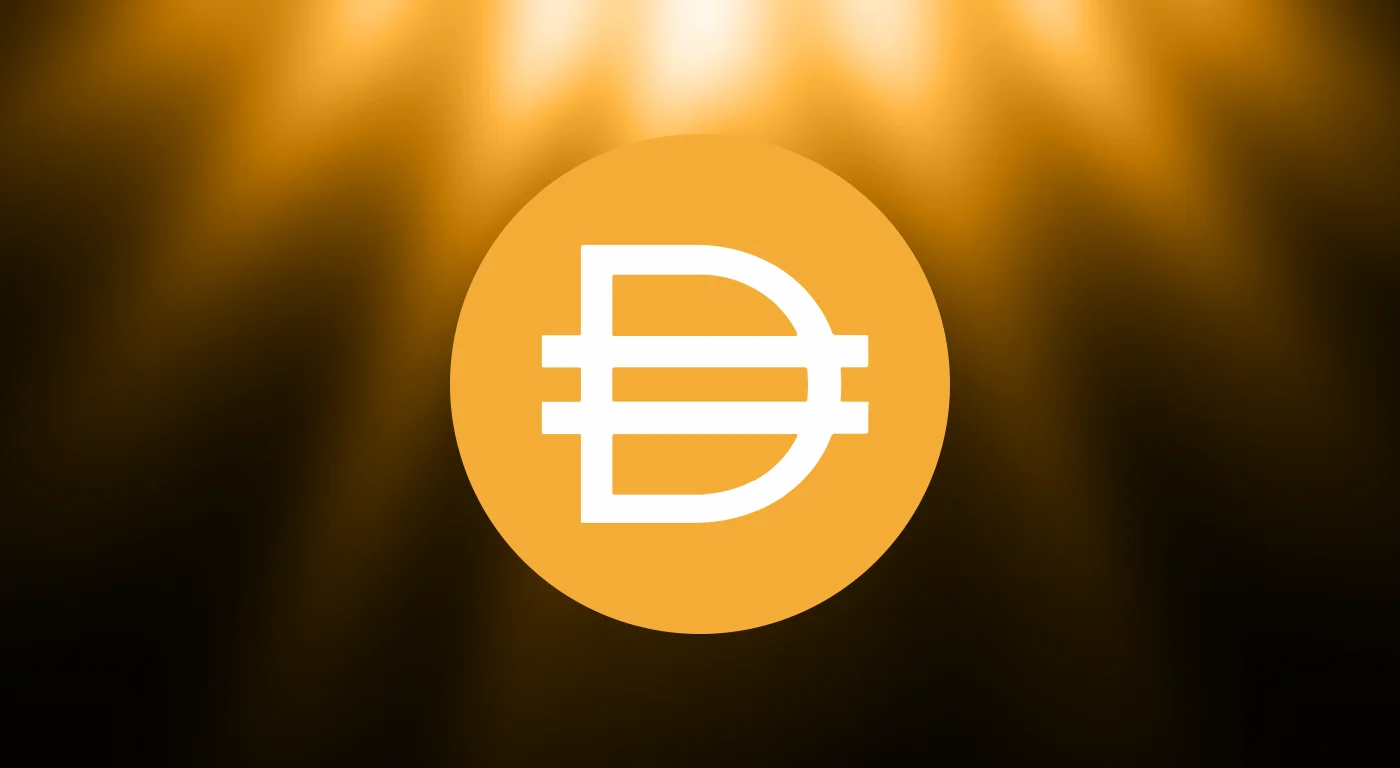
175-Year-Old Giant Opens Doors to Crypto: Western Union Makes Stablecoin Move
Western Union, one of the world's most established money transfer companies, is opening a new chapter in its digital transformation strategy. In an interview with Bloomberg, CEO Devin McGranahan explained that they see stablecoins as a major opportunity, not a threat. Western Union is working on infrastructure to enable stablecoin-to-fiat conversions and plans to activate stablecoin use in its global digital wallets.Stablecoins are no longer competitors, they're partnersMcGranahan emphasized that stablecoin integration is a natural innovation process for Western Union. "We've been innovators many times in our 175-year history, and stablecoin is one of them," McGranahan said, adding that the company is committed to leveraging this technology for fast and cost-effective money transfers worldwide. The company's goals are threefold: speeding up cross-border transfers, facilitating the conversion of stablecoins to fiat, and providing users with a store of value in regions experiencing economic instability. These statements follow the Guiding and Establishing National Innovation for U.S. Stablecoins (GENIUS) Act, signed into law last week by US President Donald Trump, as previously reported. This law requires stablecoin companies to be fully collateralized with US dollars or high-liquid assets and undergo annual audits. For traditional financial institutions like Western Union, this regulation largely eliminates legal uncertainty, making crypto integration more attractive.Pilots in Latin America and AfricaWestern Union is currently testing new settlement models in Latin America and Africa. The goal is to increase transaction speed and reduce costs through mobile wallets in regions where traditional banking is weak. The company is also preparing to establish global on-ramp and off-ramp partnerships for stablecoin buying and selling.This move suggests that Western Union is under competitive pressure. In recent years, digitally focused new players like Wise and Remitly have gained significant market share with their lower fees and faster transfer options. Meanwhile, rival MoneyGram was the first to launch the MoneyGram Wallet last year, enabling USDC-based stablecoin transfers.According to Matthew Sigel, VanEck's director of crypto asset research, mobile app downloads for giants like Western Union are experiencing a significant decline. This is forcing companies to adapt more quickly to new technologies. The stablecoin market is currently at an all-time high: According to market data, the total market capitalization has surpassed $262 billion. Furthermore, Ripple CEO Brad Garlinghouse predicts this figure could reach $1-2 trillion in the next few years.

JPMorgan May Offer Cryptocurrency-Based Loan Option: U-Turn from Financial Giant
US-based banking giant JPMorgan Chase is considering offering its customers the option to lend using crypto assets like Bitcoin and Ethereum as collateral by 2026. This development, reported by the Financial Times, signals a "U-turn" in the traditional financial world's stance on cryptocurrencies. This new direction by JPMorgan CEO Jamie Dimon, who previously labeled Bitcoin a "scam," suggests the bank is now adopting a more pragmatic approach to crypto assets.JPMorgan changes course as institutional demand growsJPMorgan's move comes at a time of growing institutional interest in cryptocurrencies. Major asset managers like BlackRock and Fidelity are entering the market with Bitcoin spot ETF products, while JPMorgan is also heeding the growing demand from its clients. The bank is reportedly aiming for a deeper involvement, offering loans directly through crypto assets rather than just ETF-based products.Jamie Dimon has been known for his strong opposition to Bitcoin in the past. In 2017, he threatened to fire employees who traded in Bitcoin. However, because these pronouncements were losing customers to the bank, Dimon adopted a softer tone in his recent statements. In May, he stated that he respected individual choices, saying, "I recommend you not smoke, but I will defend your right to smoke. I will also defend the right of anyone who wants to buy Bitcoin."Regulations are easing, banks are warming up to the sector.This move also reflects the changing regulatory climate in the US. The "GENIUS Act," signed into law last week by President Donald Trump, provides a clear federal framework for stablecoin issuers. The new regulation requires stablecoins to be fully backed by liquid assets like the US dollar and mandates annual audits for issuers with a market capitalization exceeding $50 billion. It is rumored that JPMorgan is also considering entering the stablecoin sector in this environment.The White House's crypto policy report, expected to be released on July 22, also signals a more "friendly" stance towards the sector. The Trump administration's shift toward lighter regulations compared to its predecessor, Biden, is also positively impacting the approach of major banks to crypto.JPMorgan's crypto-collateralized loan plan hasn't been finalized yet, but it's clear the bank is taking serious steps in this direction. If it materializes, JPMorgan clients will be able to secure loans from the traditional financial system using assets like Bitcoin and Ethereum as collateral.This strategic shift by JPMorgan, led by Jamie Dimon, demonstrates that cryptocurrencies, once marginalized, are now moving into the center of the financial world.
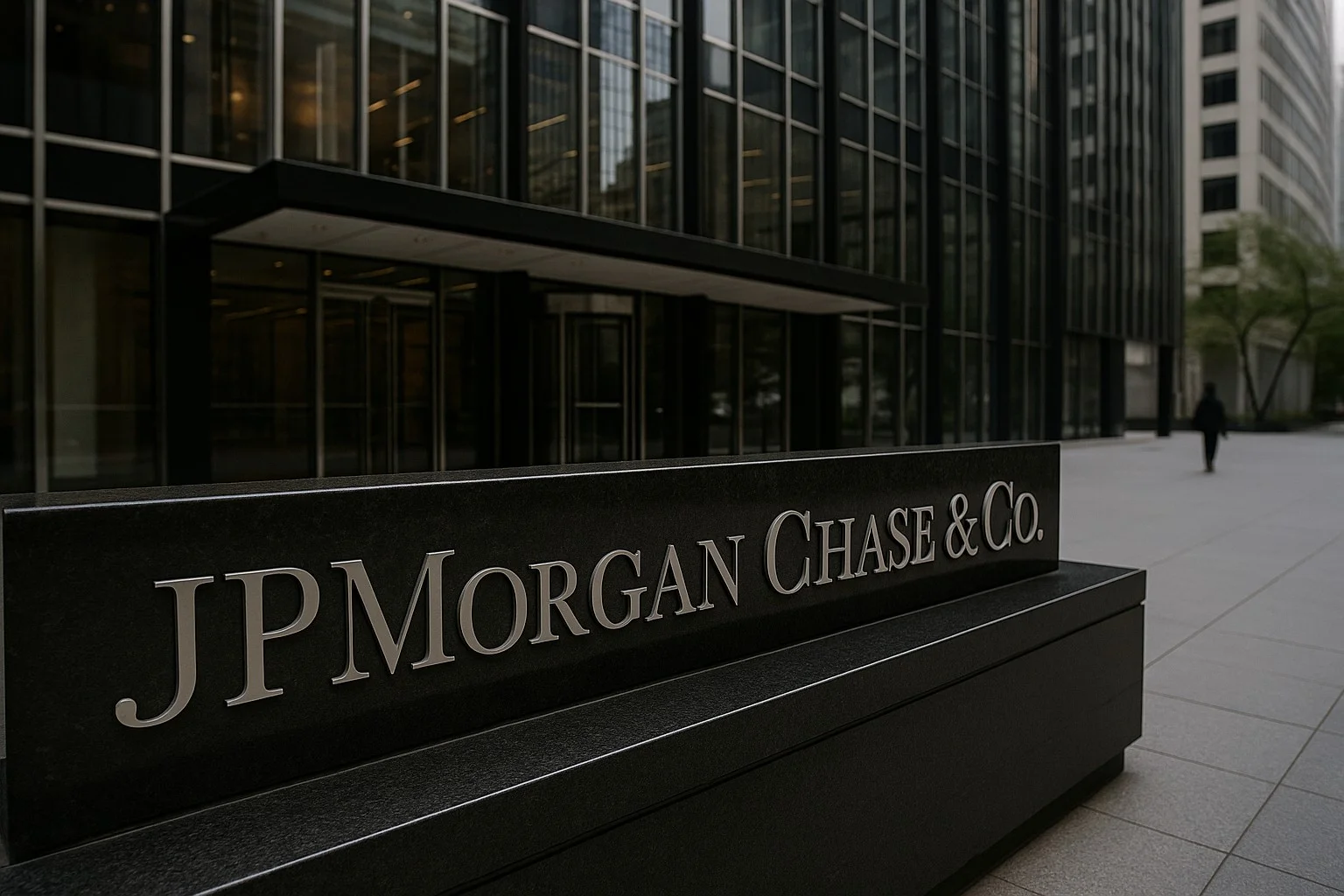
ENA Comment and Price Analysis July 22, 2025
ENA Technical AnalysisENA has recently seen strong upward momentum, swiftly surging from $0.32 to $0.54 in a short period. This rapid price rise suggests that investors should be careful as it is approaching the horizontal resistance zone of $0.66–$0.71, which also intersects with the long-term downtrend.In other words, the technical target of the uptrend and the intersection of the long-term trend are located at almost the same level—a situation which suggests that, at this strong resistance area, investors could realize profits and the market’s direction could be reshaped.Technical Outlook:Current price: $0.5453First intermediate resistance in short term: $0.60–$0.62Main resistance: $0.66–$0.71(the zone intersecting with downtrend line)If broken above, the next target: $0.90Support levels in case of a pullback:$0.48 → $0.43 → $0.40 At this level, volatility and profit-taking are highly possible; however, if this momentum continues, the short-term target could be the price range of $0.66–$0.71.This resistance area also stands for the breakout point of the downtrend. If this level is broken upwards, the rise can be expected to accelerate further. In such a scenario, prices above $0.90 might become technically possible in the medium term.These analyses, not offering any kind of investment advice, focus on support and resistance levels considered to offer trading opportunities in the short and medium term according to the market conditions. However, traders are responsible for their own actions and risk management. Moreover, it is highly recommended to use stop loss (SL) during trades.
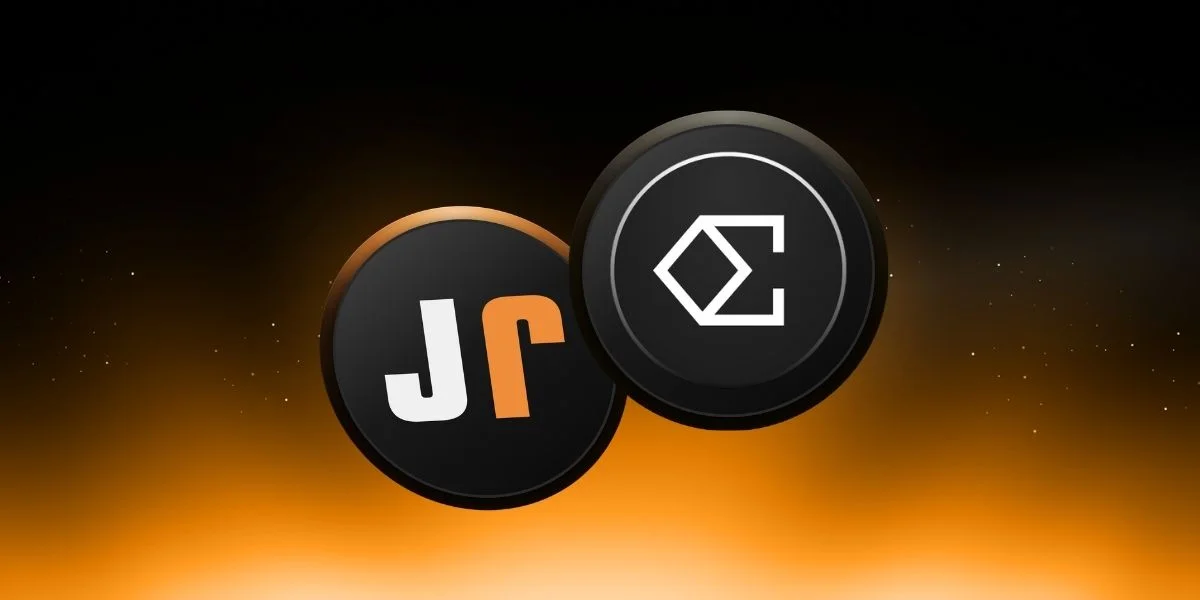
ID Comment and Price Analysis July 21, 2025
ID Technical OutlookThe ID chart shows that the price has tested the upper border of the descending channel it has been trading in for a long period on a daily timeframe. This is the fourth test to the upper border so far. ID is currently trading around the level of $0.2004, which coincides with the upper trendline of the falling channel and the key resistance zone of $0.1900–$0.1984. If the price can break above this zone, it will be a signal for strong momentum technically.Following a breakout from here, the level around $0.2524–$0.2635 could stand out as a resistance. Remember that this resistance zone worked as a strong sell area in the past and it represents the first medium-term target for the channel pattern. Downward Channel Structure Technically, the target could increase as long as the channel’s length if the price can breach the channel pattern upwards. In such a scenario, the next major resistance level could be the $0.30–$0.31 range.On the other hand, we should be following the support levels at $0.1900 and $0.1664 in case of a price pullback. Price dropping below $0.1900 could trigger a new downward movement within the channel.Summary:Price: $0.2004, Resistance zone: $0.1900–$0.1984 breachedFourth test to the upper border of the channel doneThe first target is $0.2524–$0.2635 in the event of an upward breakoutThe target of the channel breakout is: $0.30–$0.31Support levels to follow in case of a pullback are: $0.1900 → $0.1664These analyses, not offering any kind of investment advice, focus on support and resistance levels considered to offer trading opportunities in the short and medium term according to the market conditions. However, traders are responsible for their own actions and risk management. Moreover, it is highly recommended to use stop loss (SL) during trades.
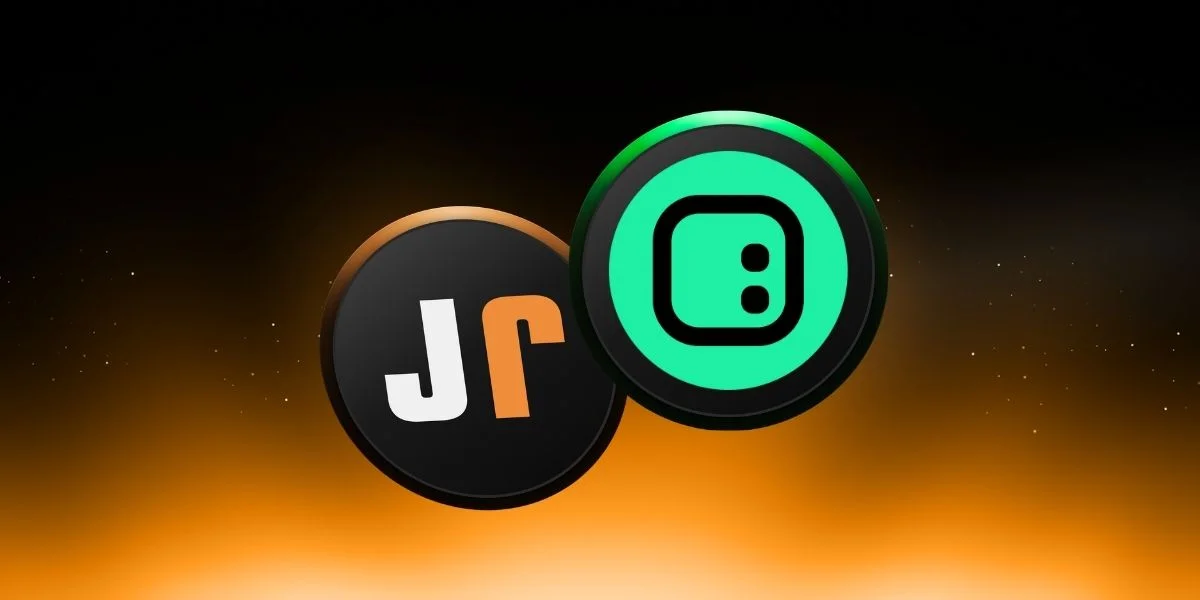
What is USDC Coin (USDC)?
One of the first questions you'll encounter when entering the cryptocurrency world is: "How can the value of these digital assets change so quickly?" In this world where Bitcoin can fluctuate by thousands of dollars a day and Ethereum fluctuates based on market news, stablecoins, especially those based on the US dollar, offer a haven of peace amidst the storm. This is where USDC (USD Coin) comes in. As its name suggests, this cryptocurrency functions as a "digital dollar." A stablecoin whose value is pegged at a one-to-one ratio to the US dollar, USDC is designed for both those who want to benefit from the speed and technology of the crypto world and those who need to trade with a stable digital asset. USDC was first launched in 2018 by the Centre consortium, a joint venture between two leading industry figures: Circle and Coinbase. Its primary goal was to combine the transparency and speed advantages offered by blockchain technology with the stability of the traditional financial system. Initially developed as an ERC-20 standard token on the Ethereum network, USDC has since gained widespread adoption by being integrated into many different blockchain networks such as Solana, Avalanche, Tron, and Arbitrum.So, what distinguishes USDC from other cryptocurrencies? Perhaps the most significant difference is that each USDC is backed one-to-one by one US dollar or equivalent high-quality liquid assets in the real world. In other words, we're talking about a structure designed to ensure that "1 USDC = 1 USD" in practice, not just in theory. This allows users to trade with peace of mind, knowing that the digital assets they hold have tangible value. Its low volatility makes it a particularly attractive alternative, particularly for use cases such as trading, savings, and instant payments. In this guide, we will thoroughly examine what USDC is, how it works, who developed it, which blockchains it resides on, and why it holds such a significant place in the digital economy. If you're ready, let's explore the story of the digital dollar together, focusing on questions like "What is USDC?", "What is USDC coin?", and "How does USDC work?"USDC Definition and OriginsUSDC, or USD Coin, is a stablecoin that, as its name suggests, sets out to be the "dollar" of the digital world. While it may sound quite simple, this simplicity actually stems from a robust structure and detailed planning. Let's take a closer look at what USDC is and how it came to be.First, let's clarify this fundamental feature: 1 USDC is always worth approximately 1 US dollar. This means the price of this coin doesn't rise one day and fall the next, like Bitcoin or Ethereum. USDC's mission is to remain stable. As Coinbase's initial announcement emphasized, this coin was designed as "an exact representation of a US dollar." This has made it a particularly attractive tool for investors seeking stability in payment transactions, money transfers, or the crypto world.But if you're wondering, "How can a digital asset remain stable?", that's where the reserve system comes into play. Think about it this way: For every USDC printed, a dollar's worth of real-world value is held somewhere. These assets are held either directly as cash or as short-term, secure financial instruments (e.g., US Treasury bonds). Circle explicitly states that these reserves are held by large, reliable financial institutions and are audited monthly by independent auditing firms. This means users can make transactions without having to wonder, "Is there really anything behind this coin?"Another advantage of USDC is that it's not limited to Ethereum. Initially, it was issued on Ethereum using the ERC-20 standard. However, over time, it has grown and evolved, and has become a part of many more blockchain networks. It's now possible to use USDC on many different chains, including Solana, Algorand, Avalanche, Flow, TRON, Stellar, Hedera, and Arbitrum. This gives users the freedom to choose their transfer chain, enabling faster and lower-cost transactions.So, who created USDC? Who's behind it? The answer is: Centre Consortium. It's a joint venture between two major names, Circle and Coinbase. Circle is a Boston-based financial technology company operating in compliance with US regulations. Its CEO is Jeremy Allaire, while Coinbase is a major cryptocurrency exchange led by Brian Armstrong. USDC, the combination of these two experienced companies, has earned trust not only for its technological infrastructure but also for its regulatory compliance and transparent structure.In short, USDC is a highly robust stablecoin, both technologically robust and backed by a substantial reserve system, bridging traditional finance and the crypto world. Moreover, it continues to expand its reach by appearing on more chains every year.USDC's History: Key MilestonesUSDC's story is filled with developments that could be considered a turning point for those seeking stability in the crypto world. Founded in 2018, this digital dollar quickly rose to prominence not only with its stable price but also with its strong support structure. Now, let's take a look at how USDC gradually evolved to its current position.2018: Launch and First StepsUSDC's birth was announced on October 23, 2018, by the Centre consortium, a joint venture between Circle and Coinbase. At that time, stablecoins were not yet widespread in the crypto ecosystem, and USDC's vision was quite clear: 1 USDC would be a one-to-one digital representation of the US dollar on the Ethereum blockchain. With the launch, Coinbase and Circle users began buying and selling USDC through mobile or web apps. The point emphasized in the introductions was that each USDC was truly backed by one dollar and that this was transparently verified. This approach created a new standard of trust in the stablecoin world at the time.2020: Rise with the DeFi Wind2020 was recorded as the year that DeFi (Decentralized Finance) exploded. DeFi protocols like Uniswap, Compound, and Aave achieved record transaction volumes, and USDC became a darling of this new era. USDC became one of the most preferred stablecoins for transactions such as providing liquidity, providing collateral, and borrowing. As of September 2020, the amount of USDC in circulation surpassed $2 billion, making it one of the world's 15 largest cryptocurrencies by market capitalization. According to Circle data, approximately 40% of the funds held on platforms like Compound and dYdX at the time were traded in USDC. In other words, investors were seeking returns while also opting for stability with USDC.2022: Multi-chain deploymentBy 2022, USDC was no longer an asset running solely on Ethereum. Circle launched a multi-chain expansion strategy to reach more users and reduce transaction costs. USDC launched on the Flow network in January and later that year also appeared on blockchains like Solana, Avalanche, Algorand, Stellar, and Hedera. DeFi transactions and NFT purchases using USDC have become quite common, especially on networks like Solana, which offer fast and inexpensive transactions. Blockchains that support USDC. During this period, Circle also implemented solutions like the Cross-Chain Transfer Protocol (CCTP), which facilitates cross-chain mobility. This allows users to transfer USDC between different blockchains more quickly and securely.2023: A New Era in TransparencyThe most important trust factor behind USDC is undoubtedly transparency. Throughout 2023, Circle took this issue even more seriously and began updating its reserve information weekly. Furthermore, one of the four major auditing firms, known as the Big Four, regularly audited and reported on reserves every month. This made it possible for anyone to verify the authenticity of all USDC in the market.Furthermore, Circle began to take a more proactive approach to regulatory compliance by increasing its communication with the U.S. Securities and Exchange Commission (SEC), the Office of the Comptroller of the Currency (OCC), and other regulatory authorities. This effort made USDC a more reliable option not only in the crypto space but also in the traditional financial world. Thus, we provide an answer to those asking, "Is USDC a reliable coin?" 2024, 2025: Regulatory and Institutionalization Steps2024 and 2025 were milestones for USDC. Circle conducted extensive efforts to comply with new stablecoin legislation in the US (such as the Senate GENIUS Act). During that same year, USDC's daily trading volume surpassed even Tether (USDT) on many days, indicating a significant shift in market confidence towards USDC.Circle also accelerated its institutionalization efforts. It prepared for an initial public offering on the US Stock Exchange and filed with the OCC in 2025 to become the first national bank in the digital currency space.Furthermore, Circle stood out as the first stablecoin company to adopt regulatory approvals such as BitLicense and state-by-state money transmitter licenses. This made USDC one of the most comprehensively regulated and compliant projects in technology, legal, and financial terms.Why is USDC Valuable?Why does USDC stand out among hundreds, even thousands, of coins in the crypto world? What are the advantages of USDC? Why do investors, traders, developers, and even ordinary users prefer it? The answer to these questions lies in the clear and powerful advantages offered by USDC. Let's take a look at why this digital dollar is so valuable.Price stability: A safe haven in the crypto stormThe sudden price fluctuations in cryptocurrencies are well known. Bitcoin can drop 10% in a day, and Ethereum can jump sharply in a few hours. But USDC is always stable. Because its value is pegged 1:1 to the US dollar, one USDC is always equivalent to approximately one dollar. This is seen as a significant advantage, especially for those who want to use crypto as a payment tool.Broad ecosystem: USDC is everywhereUSDC is at the heart of the crypto world today. It is used as collateral on platforms like Compound, Aave, and Uniswap, playing a key role in liquidity pools, and even appearing as a payment method in NFT markets.Furthermore, Circle USDC is almost universal on centralized exchanges. Major exchanges like Coinbase, Binance, and OKX support USDC, and wallet apps allow for sending and receiving USDC. According to Circle, 23 blockchains currently support USDC. These networks are as follows:1. Algorand2. Aptos3. Arbitrum4. Avalanche5. Base6. Celo7. Codex8. Hedera9. Ethereum10. Linea11. NEAR12. Noble13. Optimism14. Polkadot15. Polygon PoS16. Solana17. Sonic18. Stellar19. Sui20. Unichain21. World Chain22. XRPL23. zkSyncData confirms this: According to analytics firms like Messari, USDC is the second most traded stablecoin after Tether in terms of DeFi transactions and on-chain volume. Thanks to its fixed value, users can create arbitrage opportunities and develop strategies to achieve returns with low risk.Financial Access: A Digital Dollar Without a Bank AccountOne of the most significant aspects of USDC's value is that it offers an accessible alternative to the dollar for everyone. While opening a bank account may be easy in developed countries, billions of people worldwide still lack access to basic financial services.However, if you have an internet connection and a crypto wallet, you can instantly own dollars with USDC. You can send, store, and make payments. Especially in countries experiencing economic crises, people are turning to stablecoins to protect their national currencies from losing value. Research like Galaxy Digital shows that USDC and similar assets are used as a kind of digital safety net in these regions.Transparency and AuditUSDC holds a large reserve, and independent auditing firms review these reserves monthly and publicly report the results. Circle's reserves are kept separate from the company's balance sheet and are managed under strict regulations. Furthermore, the legal basis for this process is strengthened by official documents such as BitLicense and state-based money transfer licenses. Circle is one of the first companies to successfully get USDC approved by regulators as a “stored value instrument.” A chart showing Circle's USDC reserves. Source: Circle Who is the Founder of USDC?The team behind USDC isn't just any startup; it's a strong partnership between two giants who have made waves in the crypto world and proven themselves in both finance and technology. So, who is part of this powerful partnership?The technical and legal framework for USDC was created under the umbrella of a consortium called Centre. This consortium consists of two major players: Circle and Coinbase, both leading players in the crypto ecosystem. However, Centre's primary goal wasn't simply to develop a product; it was to build a transparent, regulatory-compliant, and user-friendly digital dollar on blockchain infrastructure.Circle is a fintech company founded in Boston, USA. Behind it are two highly experienced individuals: Jeremy Allaire (CEO) and Sean Neville (former CTO). Jeremy Allaire has long been well-known in the tech world; he previously founded software companies like Allaire Corporation. An early adopter of the blockchain and digital currency vision, Allaire has become a pioneer in this field with Circle. Circle stands out not only for its technical infrastructure but also for its regulatory compliance. For example, the company was one of the first crypto companies to receive a "BitLicense" from the New York Department of Financial Services. It also holds money transmission licenses in many US states. Thanks to this structure, USDC began to be viewed as a reliable asset by regulatory authorities from day one.Coinbase also played a major role in USDC's emergence. Founders Brian Armstrong and Fred Ehrsam undertook a pioneering mission in bringing cryptocurrencies to a wider audience. Coinbase's existing millions of users allowed USDC to quickly become widely available. The first USDC transactions were made directly through Coinbase users. This launched the stablecoin concept into active use within a broad ecosystem.Frequently Asked Questions (FAQ)We've covered a comprehensive journey about USDC so far. We've covered many details, including what a stablecoin is, how USDC emerged, why it's important, and how it's used. However, you may still have some questions that need clear answers. We've prepared this section to provide a quick overview of frequently asked questions. Here are the most frequently asked questions about USDC and their answers…What is USDC and how does it work? USDC is a stablecoin pegged to the US dollar. Users can transfer USDC to their wallets through their Circle or Coinbase accounts, or from supporting crypto platforms. They can convert USDC transferred on the blockchain to dollars at any time at a 1:1 ratio. Thanks to Circle's centralized infrastructure, every USDC is guaranteed by backed reserves.Is USDC trustworthy, and does it have reserves? Yes, USDC is a trustworthy stablecoin. Each USDC is held in reserves backed by US dollars or similar monetary instruments. Circle has these reserves audited and reported monthly by independent auditors. Furthermore, the company publishes transparent reports in accordance with the standards set by US regulators. All of this is concrete evidence of the value proposition behind USDC.What is the difference between USDC and USDT? USDC and USDT are both stablecoins pegged to the dollar, but there are some differences. USDC offers greater regulatory compliance and transparency, while its reserves are entirely backed by lower-risk assets like cash and Treasury bonds. USDT, on the other hand, has a larger reserve structure and generally offers higher market liquidity. USDC is preferred for institutional use, while USDT is preferred for fast and widespread transactions. The differences between the two can be summarized as follows:FeatureUSDC (USD Coin)USDT (Tether)IssuerCircle (via Centre Consortium, in partnership with Coinbase)Tether LimitedBlockchain SupportEthereum, Solana, Avalanche, Arbitrum, Flow, Algorand, Stellar, Hedera, etc.Ethereum, TRON, Solana, Algorand, OMG Network, Avalanche, etc.Use CaseDeFi protocols, payments, digital dollar accessibilityLiquidity provision, exchange tradingMarket PerceptionConsidered more suitable for institutional investors, seen as reliableBroader user base, but subject to regulatory concernsStablecoin Market ShareSecond largest (after USDT)Largest stablecoinWhich networks can USDC be used on? USDC is available on many blockchains. Initially launched as an ERC-20 token on the Ethereum network. Today, USDC is available on 23 networks. It is natively available on multiple chains, including the most popular ones, Solana, Flow, Algorand, Stellar, Avalanche, Arbitrum, and Hedera. This means users can choose one of their favorite blockchains and trade with USDC. There are also infrastructures suitable for cross-chain transfers.How to obtain and where to buy USDC? The easiest way is through cryptocurrency exchanges and platforms. USDC can be bought and sold on many major exchanges, including Coinbase. In addition to Coinbase, you can acquire USDC through exchanges such as Binance, OKEx, Huobi, Bitstamp, or decentralized exchanges such as Poloniex and Uniswap. You can also purchase USDC by depositing fiat directly through Circle's website and app. In short, crypto exchanges or Circle/Center platforms are the preferred channels for acquiring USDC.Is USDC an investment instrument or simply a payment instrument? USDC is primarily designed as a payment and liquidity tool; because its value is stable, it is generally used as a secure medium of exchange rather than for price speculation. However, some users use USDC in DeFi applications to generate interest or rewards. For example, USDC can be deposited into various protocols and earn annual returns of 2–8%. However, even in this case, the investor is locking in the return on a stable asset rather than the volatility of the crypto asset. In short, while USDC is primarily a digital payment and store of value, it can also be used by some users within the ecosystem to generate returns.If you're looking for stability among crypto assets, don't miss the JR Kripto guides, where we examine USDC and other stablecoins in detail.
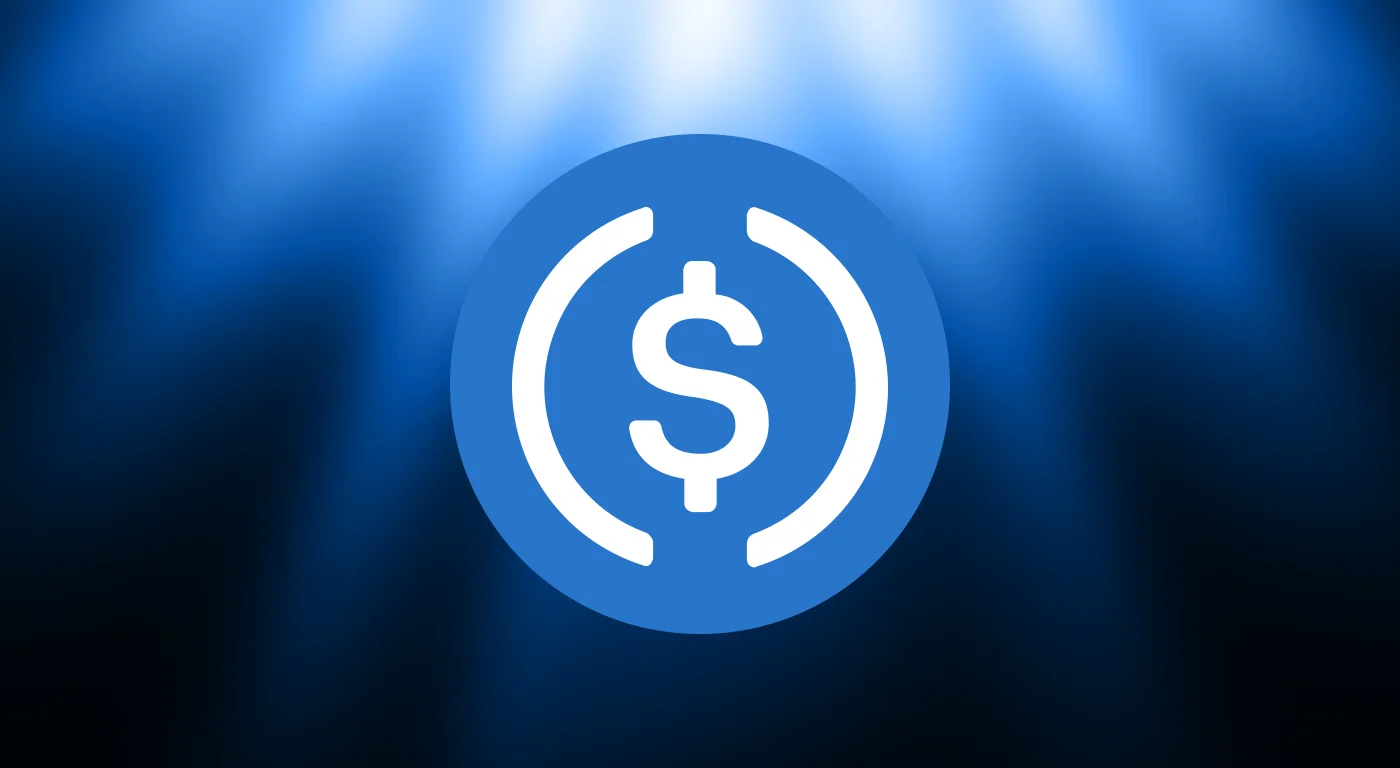
Enterprise Gateway to Ethereum: A Company Goes Public with $1.6 Billion SPAC Deal
The newly established company, The Ether Machine, is attracting attention with its massive IPO, aiming to offer returns focused on Ethereum (ETH). The company announced that it will go public by merging with Dynamix Corporation, a special purpose acquisition company (SPAC) listed on Nasdaq. The deal is expected to close in the fourth quarter of 2025.Once the IPO is complete, Ether Machine will trade on the Nasdaq exchange under the ticker symbol "ETHM." The company's goal is clear: to facilitate institutional-grade, regulated, and transparent investment in Ethereum. Ether Machine will reportedly hold over 400,000 ETH (approximately $1.52 billion) on its balance sheet at launch, making it the largest publicly traded company with Ethereum holdings.Andrew Keys Makes Major ContributionEther Machine's founders include prominent figures who played a leading role in the development of Ethereum. Andrew Keys' contribution is particularly noteworthy. Keys, an early member of ConsenSys, developed Ethereum solutions in partnership with Microsoft and later became a founding partner of the Enterprise Ethereum Alliance. Keys reportedly contributed approximately $645 million, or 169,984 ETH, to Ether Machine.Furthermore, leading institutional investors such as 1Roundtable/10T Holdings, Archetype, Blockchain.com, Kraken, and Pantera Capital have pledged to provide the company with a total capital of over $800 million. With the $170 million in cash held by Dynamix, the total gross proceeds from the merger will exceed $1.6 billion.Aiming for Institutional Ethereum ReturnsEther Machine's vision is not simply to be an Ethereum investment vehicle. The company aims to offer returns in ETH through staking and restaking operations on the Ethereum network. It will also provide institutional investors with Ether-based income through professionally risk-analyzed strategies managed through DeFi protocols. David Merin, who has been appointed CEO, was previously head of corporate development at ConsenSys, where he led fundraising efforts exceeding $700 million. Jonathan Christodoro, a veteran financier with a background in Morgan Stanley, will serve as vice chairman.Investing in the Ethereum ecosystemEther Machine emphasizes that Ethereum is not only an investment asset but also a technology infrastructure. Therefore, the company plans to invest early in Ethereum-based projects, offer open source contributions, and conduct industry-related research and publication activities. Services such as specialized staking infrastructure and block creation will also be offered to institutional investors.In recent years, the rise of crypto-focused companies via SPACs has accelerated. However, Ether Machine's size could set a new record for this trend. The company's post-IPO Ethereum holdings will surpass the holdings of SharpLink Gaming (353,000 ETH) and BitMine Immersion (300,657 ETH).The deal has been approved by the boards of both Ether Machine and Dynamix. Once shareholders approve, the transaction will be completed, and Ether Machine will be listed on Nasdaq, representing a new era in Ethereum's institutional investment landscape. Finally, it's worth noting that Ethereum is trading at $3,808 at the time of writing:
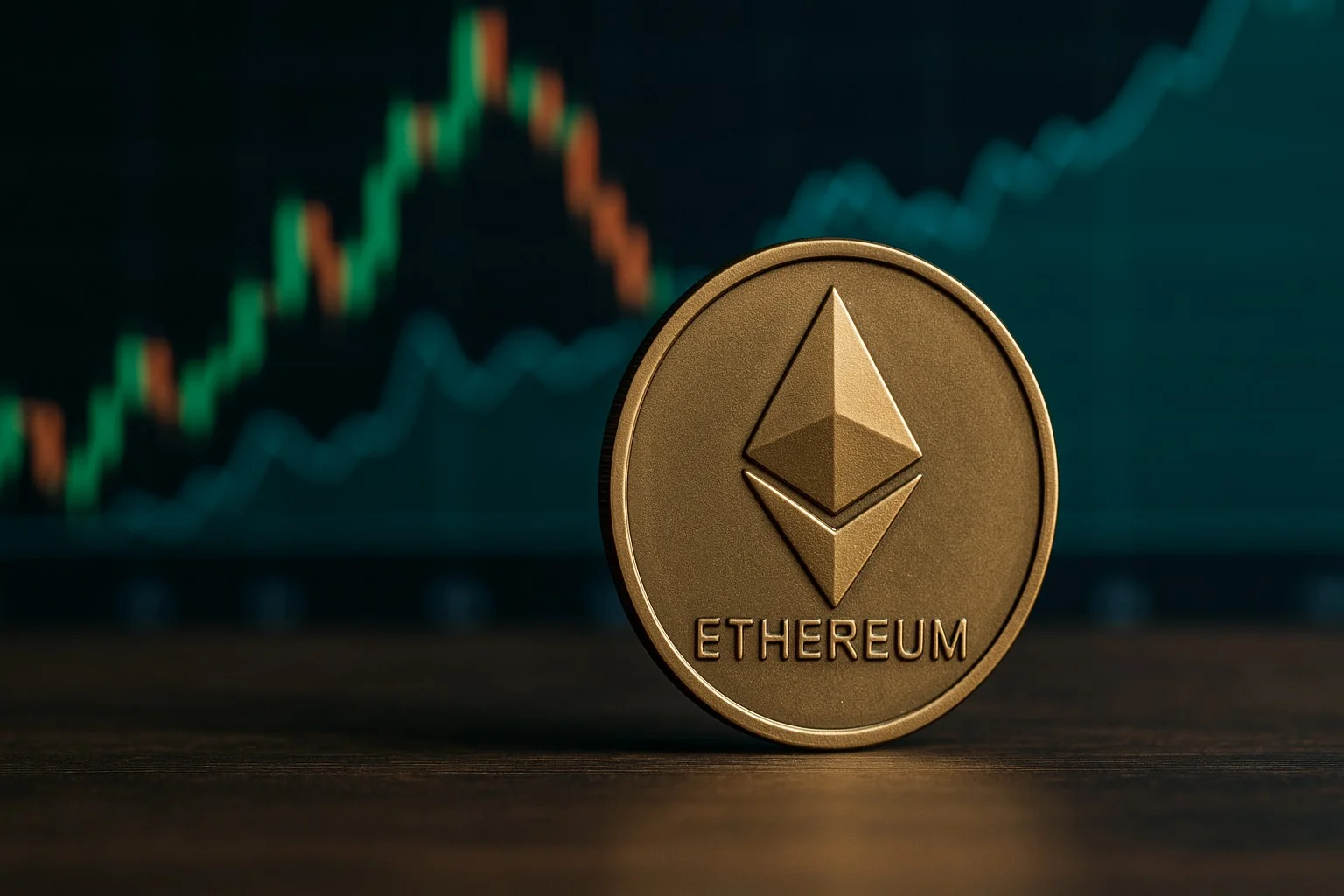
EDU Review and Price Analysis July 21, 2025
EDU Technical AnalysisLooking at the EDU chart, we see that the price has broken above the falling wedge formation. After the breakout, retest has been done properly and the price has exceeded the range between $0.148–$0.156 slowly. Holding above this level can be considered positive. The target of the falling wedge formation is the level of $0.216, but before surging to this level, there is the resistance level of $0.184. We should be following the target area of $0.216–$0.229, which is also the resistance level ahead. Fracture of the Falling Wedge Formation If EDU cannot exceed the current level, $0.148 stands as a key level. Below it, the support level of the falling wedge formation and the horizontal zone at $0.142 could work as support.These analyses, not offering any kind of investment advice, focus on support and resistance levels considered to offer trading opportunities in the short and medium term according to the market conditions. However, traders are responsible for their own actions and risk management. Moreover, it is highly recommended to use stop loss (SL) during trades.

Record in Crypto Funds: ETH and 5 Altcoins Shine
According to the latest weekly data from digital asset giant CoinShares, crypto asset investment products experienced the highest weekly inflow in history last week, reaching a record $4.39 billion. With this increase, total inflows since the beginning of 2025 have risen to $27 billion, while assets under management (AuM) have reached an all-time high of $220 billion.Ethereum dazzles, Bitcoin lags behindThis week's star was undoubtedly Ethereum. ETH products nearly doubled their own record with a weekly inflow of $2.12 billion. Total inflows in 2025 reached $6.2 billion, already surpassing the total for 2024. The continuous inflows recorded over the last 13 weeks represent 23% of Ethereum's total assets.As interest in Bitcoin continues, this week saw an inflow of $2.2 billion. While this figure remains below last week's $2.7 billion, BTC remains a favorite among investors. Bitcoin ETPs (exchange-traded products) accounted for 55% of total BTC exchange volume and continued to reflect significant investor interest.Solana, XRP, and Sui shine on the altcoin frontBesides Ethereum and Bitcoin, significant activity was also observed in altcoins. Solana saw notable inflows of $39.1 million, XRP $36.1 million, and Sui $9.3 million. Multi-asset products also saw $16.4 million in outflows. Total monthly outflows for XRP reached $57.3 million. Some projects, such as Litecoin, Cardano, and Chainlink, saw limited inflows. Altcoin data is as follows:Ethereum (ETH): $2,118.7 million inflowSolana (SOL): $39.1 million inflowXRP: $36.1 million inflowSui: $9.3 million inflowCardano (ADA): $0.3 million inflowChainlink (LINK): $0.9 million inflow Geographic distribution: The US alone led the wayThe majority of fund inflows originated in the US. The $4.36 billion inflow from the US alone accounted for almost all of the total weekly flow. Switzerland was in positive territory with contributions of $47.3 million, Hong Kong $14.1 million, and Australia $17.3 million. However, outflows were observed in some countries, such as Brazil (-$28.1 million), Germany (-$15.5 million), and Sweden (-$21 million). iShares tops the charts, Grayscale suffers lossesThe biggest gainer of the week was iShares ETFs, with a massive $4.3 billion in inflows. Grayscale is still in negative territory with $1.3 billion in outflows for the year, despite limited inflows of just $135 million. Other major names like ARK Invest and Fidelity saw mixed results, while CoinShares XBT products also closed the week with $25 million in outflows.
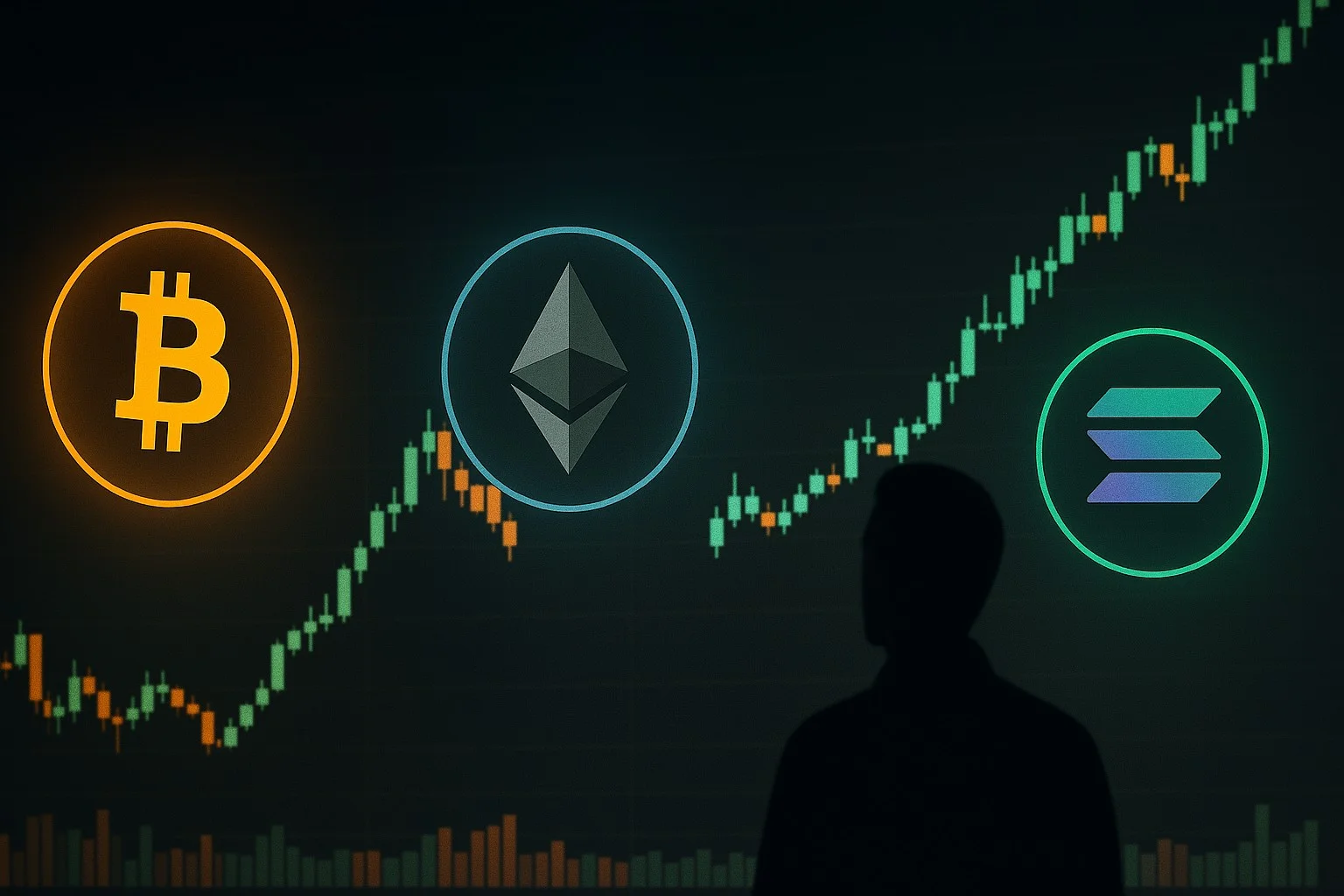
ZRO Comment and Price Analysis July 21, 2025
ZRO/USDT Technical AnalysisLooking at the chart on a daily timeframe, it is clearly seen that the coin is trading within a wide horizontal channel pattern, which indicates an accumulation process and a potentially forming new pattern in a technical sense. The price is trading around the level of $2.30, holding above the mid-border of the channel.We should be following the price zone of $2.58–$2.76 as a strong resistance, and for the confirmation of the upward breakout, the price needs to hold above $3.35. Unless this level is broken above, the channel pattern cannot be considered breached; therefore, the level of $3.35 stands out as a strong resistance level.The channel pattern is considered broken technically if the price can close above $3.35, and then the price target could be around the level of $7.00 — as long as the channel’s length.We should be following the levels of $2.08, $1.75, and $1.46 respectively as support below in the event of a pullback of the price. Remember, these support levels are important levels within the channel formation. Parallel Channel Structure Summary:The price is trading at around $2.30, above the mid-border of the channel.First resistance level: $2.58–$2.76Actual breakout level: $3.35Above $3.35, formation target is around: $7.00Intermediate resistance levels: $4.06 → $4.34 → $5.37Levels of support: $2.08 → $1.75 → $1.46Channel structure can be considered as accumulation and a potential formation.These analyses, not offering any kind of investment advice, focus on support and resistance levels considered to offer trading opportunities in the short and medium term according to the market conditions. However, traders are responsible for their own actions and risk management. Moreover, it is highly recommended to use stop loss (SL) during trades.
